Japan's Official Development Assistance White Paper 2011
Section 2 Why Does the World Help Japan?
Since the Great East Japan Earthquake, Japan has received offers of support from 163 nations and regions, including many developing countries. In addition to contributing significantly to economic growth and the reduction of poverty in developing countries through ODA, Japan has also been proactive in efforts to solve a variety of problems on the global scale, such as issues related to food supply and climate change. In addition, Japan has built friendly relationships with individual countries through technical cooperation and grassroots exchange such as overseas volunteer activities. It can be assumed that behind the support and encouragement received after the earthquake is a feeling of trust and gratitude toward Japan that has been fostered through many years of interaction with each country at a variety of levels and the accumulation of international cooperation.
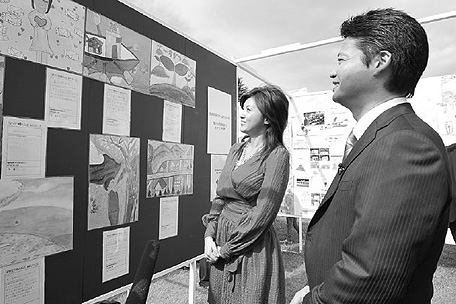
At an exhibit in Hibiya Park, Actress Norika Fujiwara and Minister for Foreign Affairs Koichiro Gemba view pictures drawn by elementary school students from the affected areas and pictures sent by children around the world to give encouragement
Since its launch in 1954, Japan has provided $300 billion of ODA to approximately 190 countries and regions. In particular, with the conviction that human resource development is the foundation of nation-building, Japan has provided proactive support for the development of the human resources that will carry the burden of development in developing countries, by sending approximately 100,000 experts and over 30,000 Japan Overseas Cooperation Volunteers, and by hosting over 400,000 trainees.
When providing aid, a large number of Japanese personnel take assignments at the site in developing countries, draw out knowledge and wisdom in cooperation with the local people, and work together while sharing the struggles. Through that process, in addition to transferring Japan's excellent technology, knowledge, and experience to the people of developing countries, friendship and mutual understanding between the people of partner countries is deepened through interaction between individuals. With its foundation of human resource development support from Japan has increased the number of its friends around the world, and has played a significant role in the building of solidly cordial relationships based on a relationship of trust at the grassroots level.
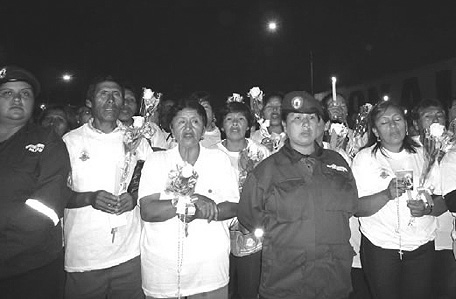
A vigil in the city of Callao. The tsunami from the Great East Japan Earthquake reached Callao, causing damage in some areas. (Peru)
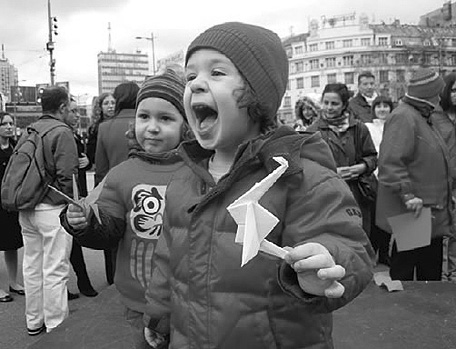
Residents gathered as a rally to encourage Japan, dressed in red and white clothing reminiscent of the Japanese flag (Serbia)
For example, Mongolia, which has a high degree of interaction with Japan (as can be seen in the world of sumo wrestling), was faced with a severe crisis due to a transition to a market economy in the 1990s. To support independent efforts to reduce poverty through sustained economic growth in Mongolia, Japan provided support for institution-building and human resource development to promote a market economy, as well as support for rural development, etc., thereby building a relationship of trust with local residents through human resource development, etc.
On the day after the earthquake, the Mongolian government called a special cabinet meeting and decided to send an emergency rescue team, relief supplies, and a donation of $1 million. In addition, all civil servants in the nation responded to a request from the government and decided to donate one day's worth of their monthly salary. It can be assumed that behind this support is the relationship of trust between Japan and Mongolia that has grown on a daily basis through economic and cultural exchange, as well as through ODA.
Japanese ODA was used to construct a seawall around the entire approximately 6 km of coastline of Malé Island, the capital of the Maldives, taking into consideration the unique characteristics of the small island nation. This seawall protected the island and its residents from the 3-meter-high tsunami that struck after the Sumatra Earthquake. After the Great East Japan Earthquake occurred, the government of the Maldives decided to provide 600,000 cans of tuna, a valuable source of foreign currency revenue, to the affected areas in Japan, free of charge. The heartfelt gratitude of the people of the Maldives for a variety of support given by Japan over the past 40 years was evident in this gesture.
A variety of relief supplies arrived in Japan from ASEAN member states as well. In a Special ASEAN-Japan Ministerial Meeting held in Indonesia on April 9, representatives from each ASEAN member state affirmed that the support from ASEAN for this earthquake was provided in the spirit of gratitude to Japan for its generous support, which has substantially contributed to the development of each ASEAN member state.
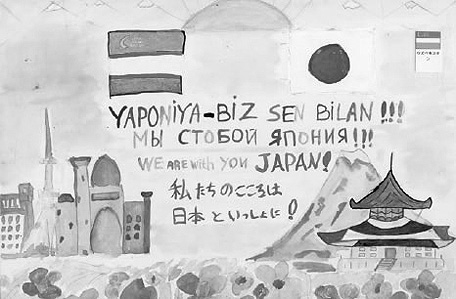
A picture drawn by children in Uzbekistan to encourage people in the affected areas
In addition, when a large-scale disaster has occurred overseas, Japan has dispatched the Japan Disaster Relief Team, provided emergency relief goods, and given emergency grant aid. For example, after the earthquake and tsunami in Sumatra in 2004, Japan provided Indonesia with a variety of support, including dispatching the Japan Disaster Relief Team, composed of a rescue team, a medical team, and military personnel, etc., providing tents, sleeping mats, blankets, generators, and other emergency relief goods, and giving grand aid. After the Great East Japan Earthquake, not only monetary donations, but also approximately 10,000 blankets as well as canned emergency food and other food items were sent from Indonesia. On June 18, Indonesian president Susilo Bambang Yudhoyono and his wife visited Kesennuma City, one of the affected areas, to offer their sympathy. They expressed their gratitude for the support that Indonesia received from Japan in the past when the country suffered from natural disasters.
Behind Japan’s more than half century of proactive contribution to the development of developing countries is the recognition that efforts to resolve issues that threaten on a global scale are a duty of major countries, and the simultaneous understanding that the peace and stability of the international community is vital to Japan’s best interests. The support provided by the international community after the earthquake shows that Japan has truly secured its stability and prosperity through a relationship of interdependence, and that the building of a solidly cordial relationship with foreign countries and proactively contributing to the international community ultimately benefit Japan itself.
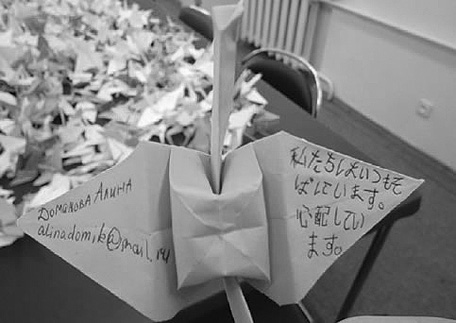
Messages of encouragement for the victims, written on an origami crane (Russia)
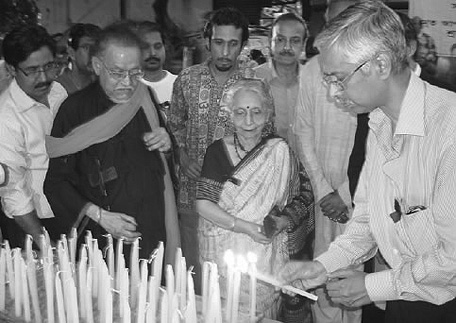
Citizens of Calcutta light candles at a vigil (India)
